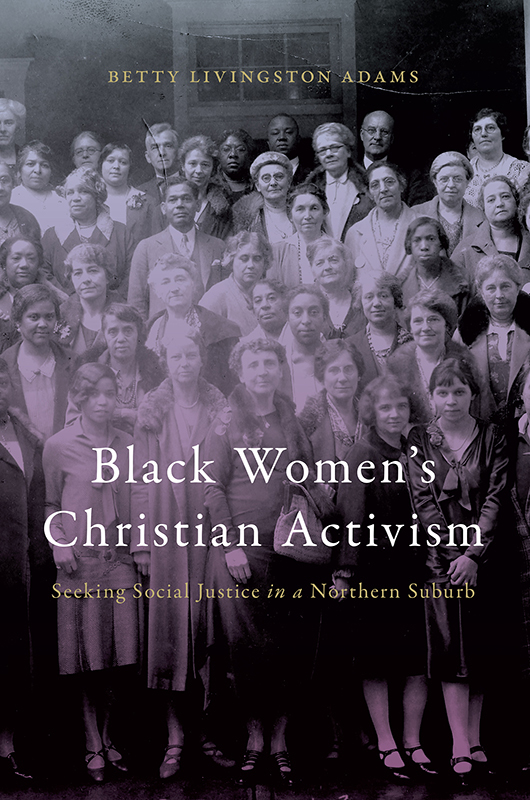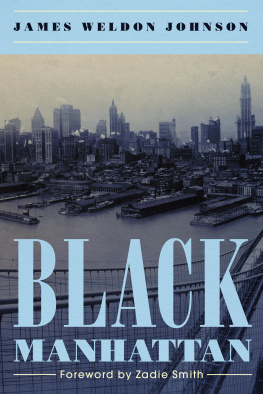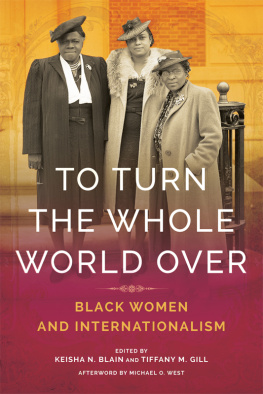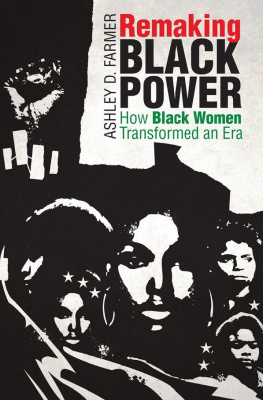
Black Womens Christian Activism
Black Womens Christian Activism
Seeking Social Justice in a Northern Suburb
Betty Livingston Adams

New York University Press
New York and London
NEW YORK UNIVERSITY PRESS
New York and London
www.nyupress.org
2016 by New York University
All rights reserved
References to Internet websites (URLs) were accurate at the time of writing. Neither the author nor New York University Press is responsible for URLs that may have expired or changed since the manuscript was prepared.
ISBN: 978-0-8147-4546-5
For Library of Congress Cataloging-in-Publication data, please contact the Library of Congress.
New York University Press books are printed on acid-free paper, and their binding materials are chosen for strength and durability. We strive to use environmentally responsible suppliers and materials to the greatest extent possible in publishing our books.
Manufactured in the United States of America
10 9 8 7 6 5 4 3 2 1
Also available as an ebook
To Tirzah and Bethlehem
Contents
When I relocated to Summit, New Jersey, many years ago for what was to be an eighteen-month corporate transfer, I could not imagine the place this New York City suburb and its history would assume in my life. As my tenure came to be counted in years rather than months and the incongruity between the physical and imagined geography of the suburb became increasingly apparent, my curiosity turned into intellectual inquiry and my weekends into uncovering shards of the extraordinary story of African American church women concealed in the faded pages of the suburbs newspaper and the fragmented histories of the faith communities they had built and nurtured. A record of faith and courage against seemingly insuperable odds began to emerge, a record that introduced me to a tradition of African American womens engagement with religion and society.
In writing this book I have received many gifts and incurred debts far too numerous to recount in this small space. However, I would not have been able to complete this book save for a serendipitousdare I say, providentialencounter with Glenda Elizabeth Gilmore. Her genuine warmth and interest transformed intellectual curiosity into the narrative of Christian activism I have tried to tell in these pages. She inspired me with her rigorous scholarship, challenged me with her insightful questions, and encouraged me with astute and usable feedback. I am eternally grateful for her mentorship and friendship so generously shared along this improbable journey.
I am also grateful for the support and collegiality of the Rutgers University History Department that made Seminary Place a home away from home for this corporate expat. I had the good fortune to receive the postdoctoral fellowship in Race and Gender History and spend a year as a Global Scholar in the Institute for Research on Women (IRW) and subsequently as an Associate Fellow in the Rutgers Center for Historical Analysis (RCHA). I am particularly grateful to Jennifer Hammer and Constance Grady at NYU Press for their unfailing advice, assistance, and guidance throughout this process.
The book is dedicated to my granddaughters, Tirzah Howard and Bethlehem Livingston Adams, my hope for the future.
In 1897 twenty-seven-year-old Violet Johnson moved from Brooklyn, New York, to Summit, New Jersey, a place in the process of transforming from a country village into a New York City suburb. Within a year, the domestic servant had organized a Baptist church. Others would later extol her genius for organization, religious, civic, social and industrial[:] institutions flourish at her touch. The decision to create a sacred space for African American domestic workers thrust Johnson into public space and onto the path of Christian activism. For as the North Carolina native discovered, religious choices are rarely just about religion.
This book tells the story of the complicated intersections of politics and religion, race and gender, and place, space, and black womens quest for social justice in the early twentieth century. Black women like Violet Johnson, living and working in the northern suburbs, entered public spaces, shaped religious practices, and influenced the twentieth-century struggle for civil rights. Their faith and willingness to assume responsibility mattered in the churches they established, the institutions they built, and the communities they sustained. Their organizing made a difference.
This book interweaves the narratives of American religious space, womens space, and white middle-class space from the end of the nineteenth century to World War II, roughly 1898 to 1945. In examining the public presence of black women and making them visible in spaces generally considered masculine and white, this volume documents the contingent strategies and organizational models church women employed in the fight for social justice while also revising the chronology and trajectory of northern racial oppression and civil rights protest. Both religion and the suburbs emerge as discursive sites for the negotiation of meaning and power. By locating womens Christian activism in this historic moment, a departure from traditional emphases on race relations in the South or the postWorld War II North, this book privileges the agency of ordinary, non-elite black women who were integral to the process of American suburbanization and the expansion of American Protestantism. It traces the development of their institutions and documents their struggle for social justice and civil rights, locally and nationally, over nearly five decades. It reperiodizes the history of the civil rights movement by showing how racial segregation worked in the North in the first half of the twentieth century.
This volume also documents the trajectory of Christian influence in an increasingly secular society. Missionary and temperance women turned to the woman suffrage movement and partisan politics to address housing, health, and employment in northern communities. However, they wielded less power in these secular institutions than in their autonomous religious organizations or the interracial church womens movement.
The book tells a story of national significance and amplifies the strategies Christian women used in their struggle for social justice. It offers a broad history anchored in the religious narratives of two women who emerged as leaders in New Jersey and the nation, one a domestic servant and Baptist lay leader, the other a seamstress and ordained Methodist minister. Violet Johnson (18701939) arrived in suburban New Jersey in 1897 with her white employers; in 1925 Reverend Florence Spearing Randolph (18661951) accepted an interim appointment to a fledgling African Methodist Episcopal (AME) Zion congregation in the same suburb and during the Great Depression built an institutional church that served the entire community. Among the first generation of free-born citizens of color, they came of age in the optimism of the postCivil War era and shaped their worldview in the egalitarian message of Protestant evangelicalism and the Reconstruction Amendments. They expected to assume their place in a multiracial, Christian nation. However, confronted with increasing evidence of political and social retrenchment on the question of equality, these ordinary working women entered public space and challenged hegemonic assumptions of gender and race.
As women of the Victorian era, Johnson and Randolph participated in the discourse of true womanhood and separate spheres, a discourse often at odds with the gendered and color-coded society in which black women confronted both the
Next page






